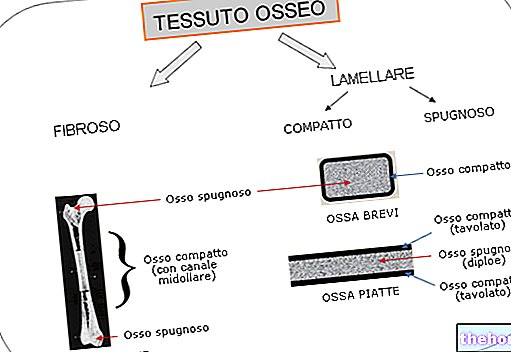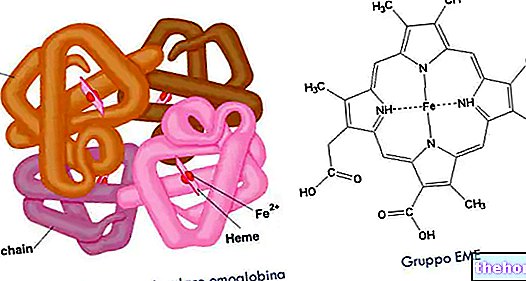Myosin
Myosin is the engine of myofibrils; each molecule is made up of 6 subunits, of which 2 are identical heavy chains, very large, and two pairs of light chains, smaller.
The heavy protein chains intertwine to form a terminal, rigid, spiral tail and two globular heads.
Two light protein chains are associated with the heavy chains of each head.

Inside the thick filaments, the various isoforms of myosin are organized in such a way as to expose their heads at the ends, while the tails group, like a bundle, in the central region. The joint between the head and tail is a flexible neck (hinge) that allows the heads to flex during contraction.
The globular portion is also referred to as heavy meromyosin, while the terminal portion is known as light meromyosin.
The globular heads of myosin form the transverse bridges that mediate interaction with the thin actin filaments, which act as a "rope".
The phenomenon of contraction can be divided into two phases:
1) coupling (formation of transverse bridges) between thick and thin filaments;
2) sliding of the filaments
As mentioned, the formation of the transverse bridges depends on the "increase in" the activity of calcium inside the fiber. The presence in the myosin head of a pocket responsible for binding with ATP, as well as an enzyme (ATPase) capable of splitting it into ADP and inorganic phosphate, is also fundamental, releasing energy.
Actin
Actin, which makes up the thin filaments of the sarcomere, is a globular protein, shaped like a sphere (G-actin). Many of these molecules join together to form long, thin granules (called F-actin). Two of these chains are wrapped eleicodally on each other, like two pearl necklaces, giving rise to the thin filament.
Each molecule of G-actin contains a binding site for the myosin head, which, in resting conditions, is effectively blocked by two proteins. In fact, the thin filaments are made up not only of actin, but also of:
- TROPOMYOSIN: in the resting muscle it prevents the contact between 7 molecules of G-actin and the respective myosin heads, keeping the muscle relaxed.
- TROPONIN: when it binds calcium it changes its conformation and displaces tropomyosin allowing the coupling with myosin

In addition to these proteins, muscle myofibrils contain others, including:
titin, conninin and nebulin, with the function of stabilizing and centering the sarcomere during contraction.
Other articles on "Actin myosin"
- myofibrils and sarcomeres
- muscles of the human body
- Skeletal muscle
- Muscles classification
- Muscles with parallel bundles and pinnate muscles
- Muscle anatomy and muscle fibers
- muscle contraction
- muscle innervation
- neuromuscular plaque
















.jpg)











